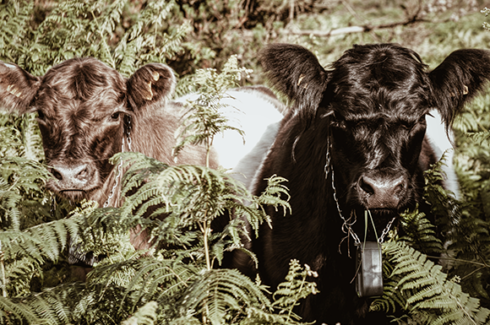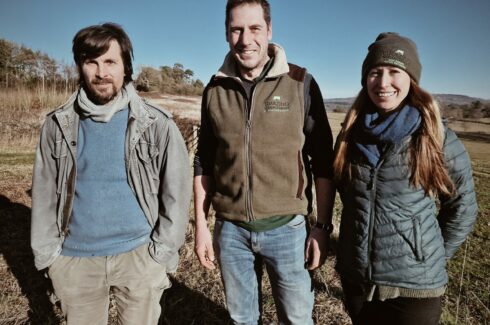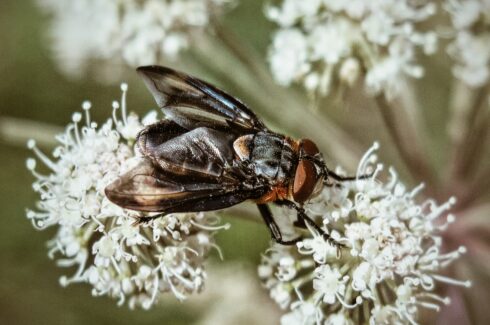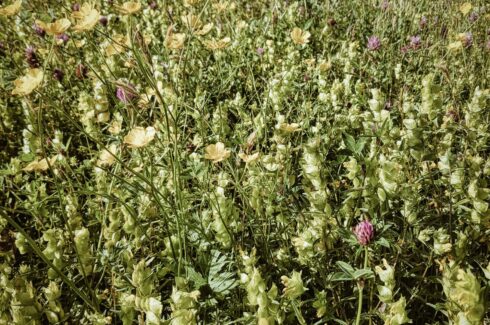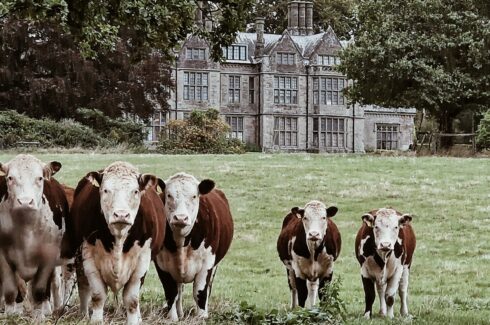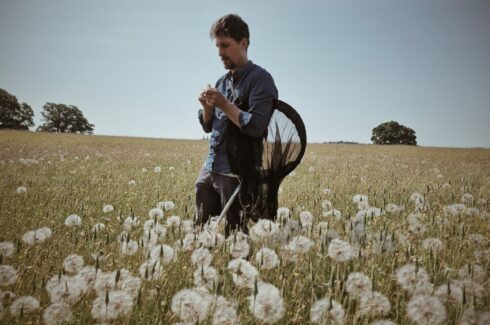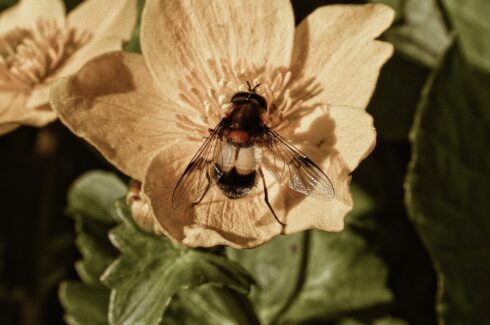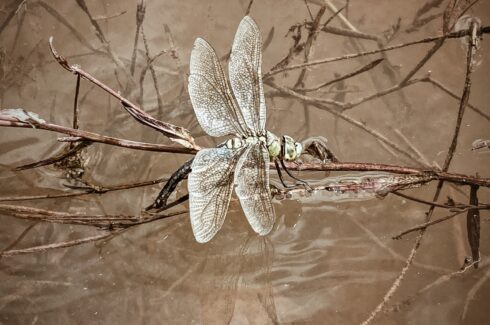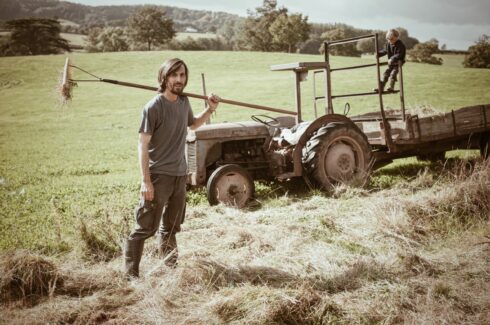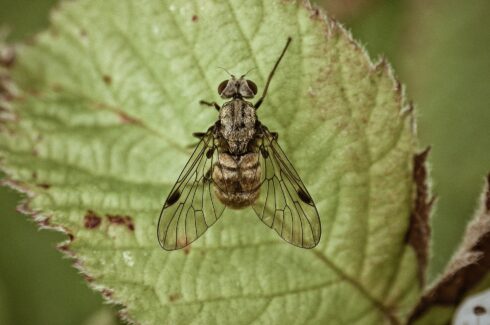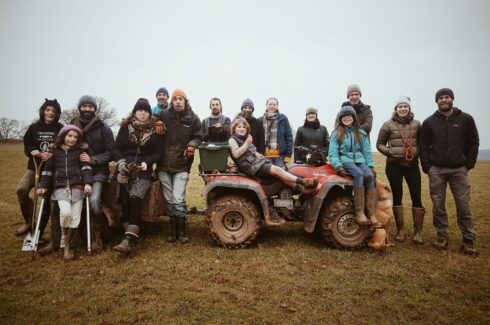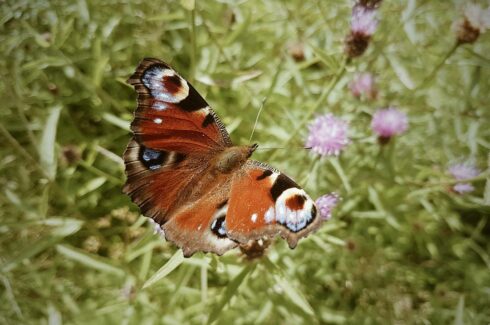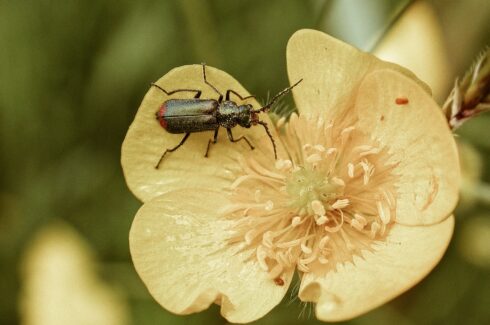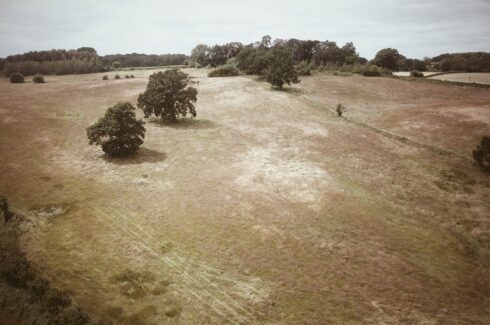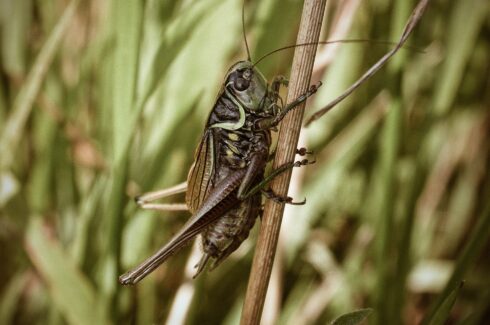Rewilding farming
The land management here at Old Lands is informed by ecology; the restoration of our farmland biodiversity is the thing we place the most importance on. With the industrialization and intensification of agriculture, our farmland flora and fauna have declined catastrophically in Britain over the last 100 years. Like Rewilding, we are not looking to offer a solution to feed an entire population. Still, we are an example of how a farmed landscape, managed in a low-intensity manner, allows open country species to thrive while also providing food. We are just a small part of the necessary mosaic of regenerative land management that is needed to restore what we have lost.
Through his work over the last 25 years, Sam Bosanquet, our ecologist and the current custodian of Old Lands, has mapped many of the best grasslands and wetlands across Wales for the statutory conservation agencies. Putting into practice all that he learned from the farmers who managed them, he started making changes to the farming here some 18 years ago. He saw the role traditional, low-intensity grazing management has in maintaining diverse, flower- and insect-rich habitats, and how these species underpin our open-country biodiversity. Moss and liverwort recording in his spare time, including co-authoring the Field Guide to British Bryophytes, he honed an eye for detail. Since the early 1990s, he has been recording the plants, animals and fungi on the estate, and has identified more than 3400 different species here.
Old Lands is a 220-acre parcel of land at the southern tip of the 1250-acre Dingestow Court estate. It skirts the big house and is, in part, a registered historic parkland. Almost all of it was ploughed and ‘de-hedged’ in the 60s and 70s to make more ‘efficient’ arable fields; the small fields gone, it came to be known by the family as The Prairie. Only one corner of marshy grassland survived. That corner – the Caewern Triangle – was protected due to its inaccessible nature, and the plants and insects that sought refuge there have now spread back across the land to the arable that was left bare under the Set-aside scheme in the late 90s. This was the start of a slow recovery, which saw native flowers and grasses return to all of the fields, accompanied by the insects that feed on them. In order to aid this recovery, the complete avoidance of fertilizers and a gentle balance of cattle grazing and hay cutting was put in place.
None of the fields have been reseeded, as the species that originated here are best placed to support the full lifecycle of the native insects. A reseeded herbal ley might look flower-rich, but its annual plants only provide nectar for adult insects; permanent pastures however offer not only nectar but also the foodplants for their larvae and the cover for them to pupate. The native hay here is legume-rich, high in protein with native Bird’s-foot Trefoil, Meadow Vetchling, Tufted Vetch, Common Vetch, Zigzag Clover, and many more…
As of spring 2024 Sam will be working collaboratively with the graziers Alex and Emily Crawley of Grazing Management who will be taking on the Old Lands fields. They use an adaptive paddock grazing system and are going to cut the hay from the most flower-rich meadows for bale grazing in areas where flower diversity needs to be bolstered. The drier pastures will be managed to allow out-wintering of the cattle using a lightweight hardy Welsh breed rather than hosting tack sheep as was done here historically. With the adjacent farms on the wider estate starting new tenancies next year, we are in the process of establishing a landscape-scale cluster of farms with a common aim. Continuing the tradition of wood pasture found here, we shall continue adding more open-grown native trees to increase connectivity for woodland species. When the permissions are granted, we are set to work on a funded landscape-scale rewetting project. Digging dew ponds and re-meandering streams that were straightened when there was a push to make the countryside more orderly. In doing so, we hope to create a resilient landscape to help mitigate flooding beyond.
Airborne ammonia pollution spreading in from the surrounding intensive agriculture has slowed the pace of the reversion to species-rich permanent pastures. We are not alone in this – it is the case across much of lowland Britain – but this form of rural pollution is as yet little discussed. Nearly 30kg of nitrogen per hectare annually falls onto our land from nearby dairies and poultry units. This ‘free fertilizer’ favours grass growth over flowers, resulting in the Nettles, Thistles, Docks, Goose-grass and Bracken thriving. To help mitigate its effects, hay-cutting helps to reduce fertility, and the arrival of Yellow Rattle a few years ago has, and will, significantly reduce grass dominance. As an additional long-term solution to help stall the nitrogen drift across our land, we are looking to plant carefully sited tree and scrub screens.
As for what we have achieved so far: we now have 40 acres of species-rich grassland priority habitat (as defined by Save our Magnificent Meadows), surrounded by another 160 acres of herb-rich semi-improved grassland. Grasshoppers, grassland Moths and Butterflies, Soldier Beetles, Leaf Beetles and Robberflies are all thriving. Insectivorous birds such as Tree Pipit and Redstart colonised 15 years ago, Kestrels bred for the first time in decades in 2022, Stonechats colonised a scrubby area in 2023, and Grey Partridges have returned after 40 years of absence. A Curlew spent three days prospecting early this summer and may, we hope, eventually return to breed. When the Cuckoo finally shows its head, that will be our ultimate sign of success. Until that day comes, we will be working our utmost to lure back the large moth caterpillars on which they feed in readiness for their return.
Free guided walks with Sam on the 14th & 15th of June – please do book, see links below
https://www.eventbrite.co.uk/e/free-walk-talk-with-our-ecologist-tickets-887553304827

